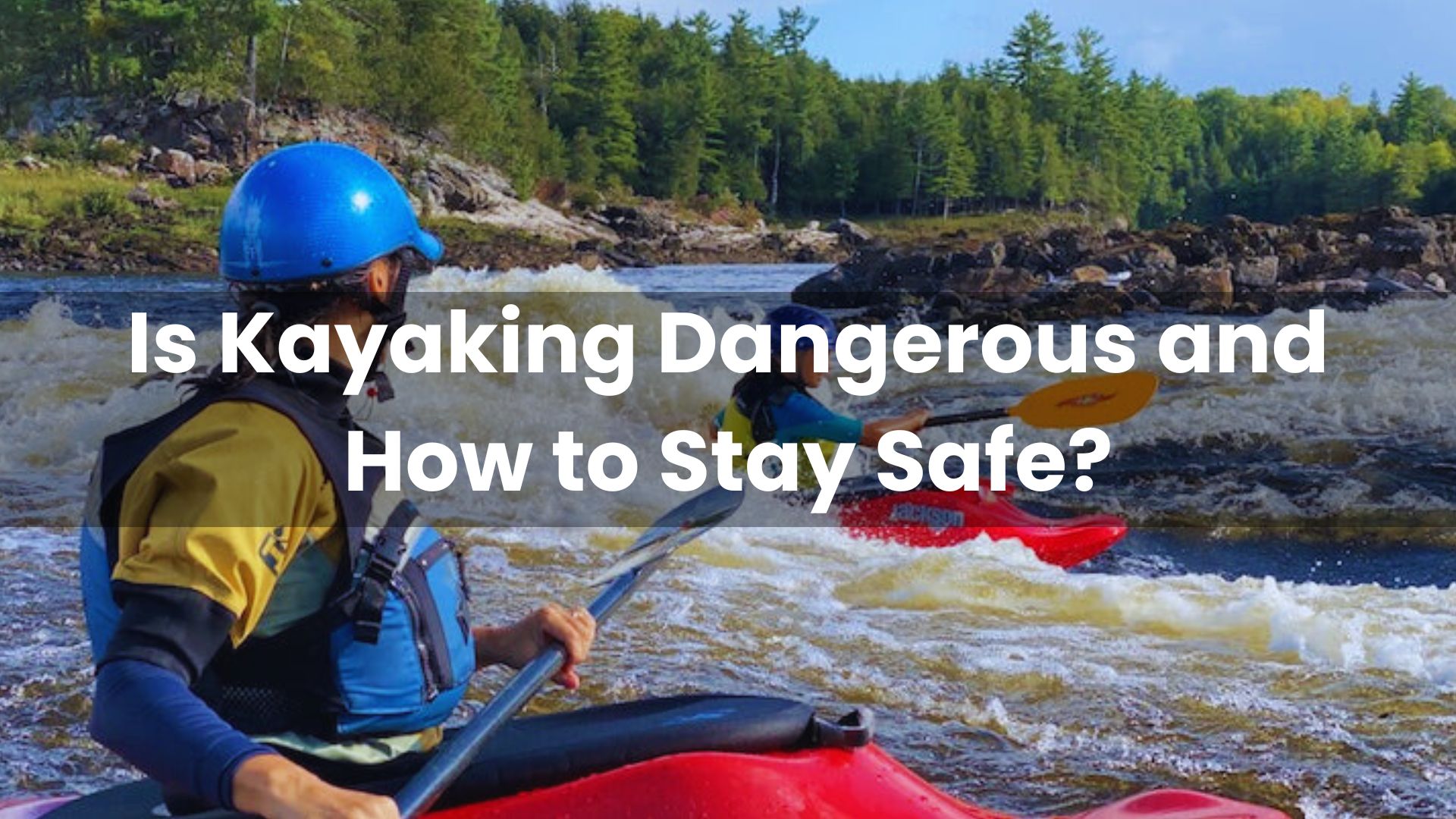Kayaking is a popular water sport that offers a thrilling way to explore rivers, lakes, and coastal areas. As with any outdoor activity, kayaking carries inherent risks that must be understood and addressed to ensure a safe and enjoyable experience. For those new to kayaking, it’s natural to wonder about the potential dangers involved. However, with proper precautions and knowledge, kayaking can be a remarkably safe and user-friendly activity.
Is kayaking dangerous? While kayaking does carry some risks, they can be effectively managed by following safety guidelines and best practices. In this comprehensive guide, we will delve into the potential hazards associated with kayaking and provide essential tips to minimize risks and stay safe on the water. By understanding the risks and following safety guidelines, kayakers can mitigate potential dangers and focus on the joys of paddling through scenic waterways.
Understanding the Risks of Kayaking
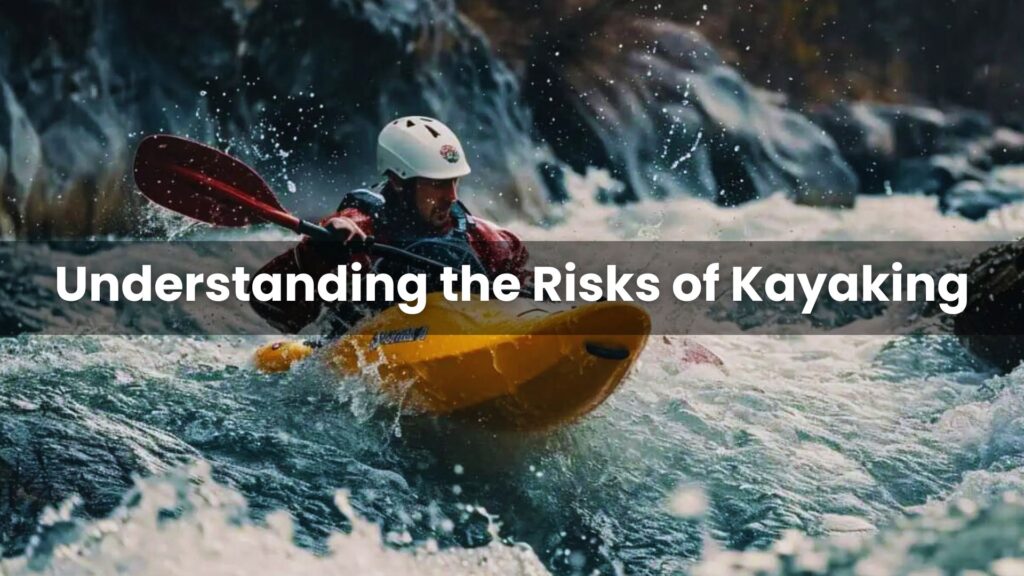
Common Hazards in Kayaking
Kayaking is an exhilarating sport that brings you close to nature and provides a fantastic workout. However, like any outdoor activity, it comes with its own set of risks. Understanding these risks and preparing for them can ensure a safe and enjoyable experience on the water.
Water Conditions and Currents
Navigating the waters in a kayak requires awareness of the water conditions and currents. Fast-moving currents, unexpected changes in water flow, and underwater obstacles can pose significant dangers. It’s crucial to check local water conditions before setting out and to kayak in areas that match your skill level.
Weather Conditions and Wind
Weather can change rapidly, and being on the water in a kayak makes you vulnerable to these changes. High winds can make paddling difficult and dangerous, potentially leading to capsizing. Always check the weather forecast before your trip and be prepared to change your plans if necessary.
Wildlife Encounters and Marine Life
While wildlife encounters can be a highlight of kayaking, they can also present hazards. It’s important to maintain a respectful distance from marine life and to understand how to react if you encounter aggressive animals.
Equipment Failure and Maintenance
Proper equipment is essential for safe kayaking. Regular maintenance of your kayak and gear can prevent equipment failure while on the water. This includes checking for leaks, ensuring that your paddle is in good condition, and that your personal flotation device fits properly and is in good repair.
Human Error and Mistakes
Many kayaking accidents are due to human error. Overestimating your abilities, not paying attention to your surroundings, or paddling in unsafe conditions can lead to accidents. Proper training, staying vigilant, and kayaking within your limits can help mitigate these risks.
Preparing for a Safe Kayaking Experience
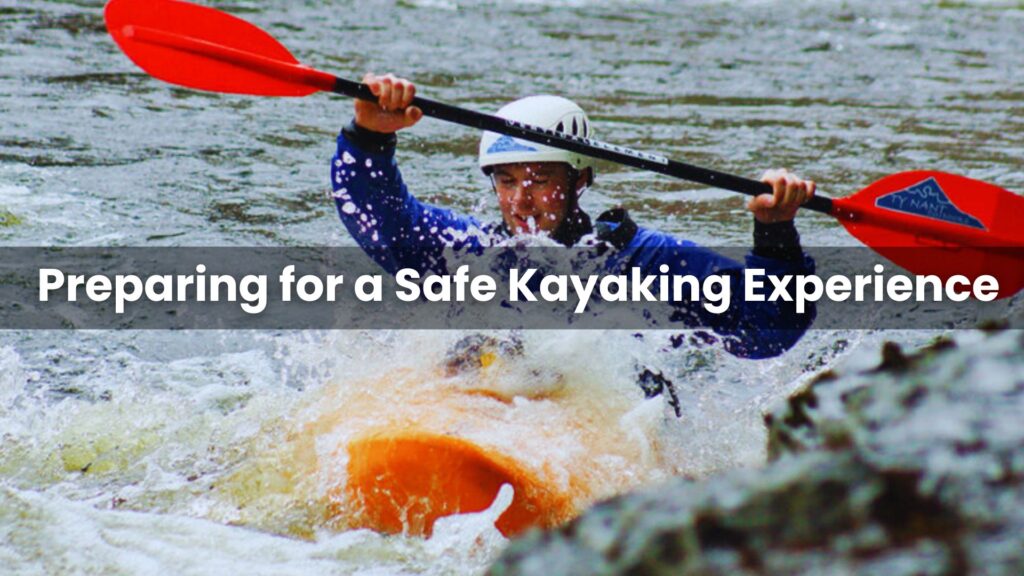
Kayaking is an exhilarating sport that offers both adventure and tranquility. However, like any water-based activity, it comes with inherent risks. Proper preparation is key to ensuring a safe and enjoyable experience on the water.
Essential Kayaking Gear
Before setting out, it’s crucial to equip yourself with the right gear. A well-fitted personal flotation device (PFD) is non-negotiable it should be comfortable yet snug enough to not ride up around your face. Choose a bright color for visibility. A helmet is also essential, especially when navigating rough waters or areas with low-hanging obstacles.
Your kayak should suit your skill level and the type of water you’ll be navigating. For beginners, a stable and easy-to-maneuver kayak is best. Paddles should be the right length for your height and the width of your kayak. Additionally, carry a bilge pump and a paddle float to aid in water evacuation and self-rescue.
Kayaking Safety Checklist
Weather Check: Always check the weather forecast before heading out. Avoid kayaking in extreme conditions like high winds or lightning storms.
Route Planning: Plan your route and make sure it’s suitable for your skill level. Inform someone onshore of your planned route and expected return time.
Communication Devices: Carry a whistle and a waterproof VHF radio or a mobile phone in a waterproof case to call for help if needed.
Dress Appropriately: Wear layers and materials suitable for the water temperature, not just the air temperature. Consider a wetsuit or drysuit in colder conditions.
Hydration and Nutrition: Bring enough water and snacks for your trip. Staying hydrated and energized is important.
Emergency Kit: Pack a first-aid kit, a knife, a headlamp, and a repair kit for your kayak.
Skill Preparation: Ensure you have the necessary skills for your kayaking adventure. This includes knowing how to right your kayak if it capsizes and how to perform self-rescue and assisted-rescue techniques.
Safety Tips for Kayaking
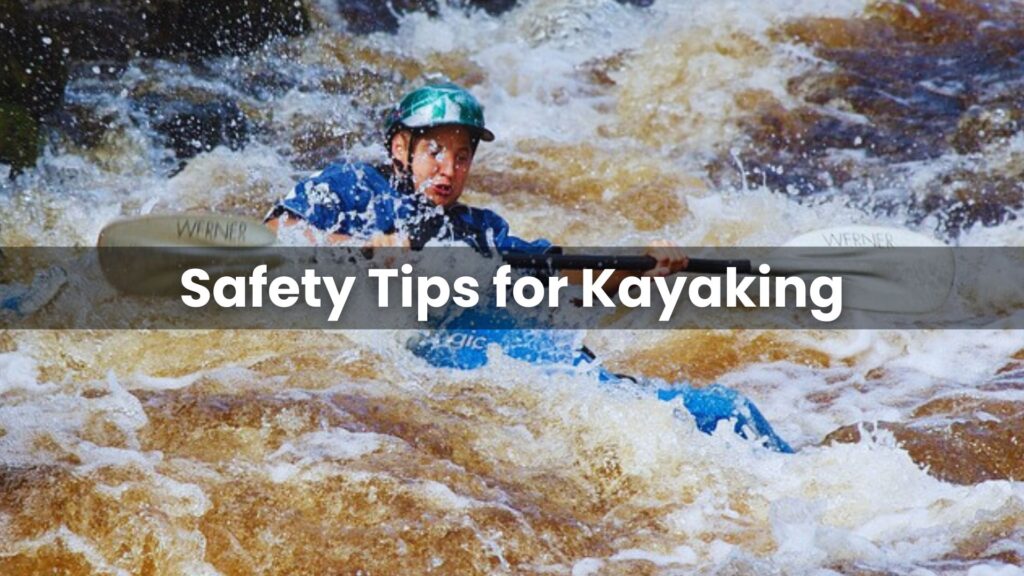
Kayaking is an exhilarating sport that offers the chance to explore waterways and enjoy nature, but it comes with inherent risks. To ensure a safe and enjoyable experience, it’s crucial to follow safety guidelines both on and off the water.
On-Water Safety Tips
Wear a Life Jacket: Always wear a properly fitting, U.S. Coast Guard-approved life jacket, regardless of your swimming skills.
Check Weather Conditions: Before heading out, check the weather forecast and avoid kayaking in adverse conditions.
Plan Your Route: Familiarize yourself with the area and plan your route, taking note of potential hazards like rapids or busy boat traffic.
Stay Visible: Use brightly colored gear and consider attaching a safety flag to your kayak to increase visibility to other water users.
Know Your Limits: Paddle within your skill level and don’t attempt challenging routes that exceed your experience.
Carry Communication Devices: Have a waterproof VHF radio or a fully charged phone in a waterproof case for emergencies.
Paddle with Others: Whenever possible, kayak with a group or at least one other person for added safety.
Off-Water Safety Tips
Get Proper Training: Take kayaking lessons to learn paddling techniques, self-rescue, and safety procedures.
Inspect Your Equipment: Regularly check your kayak and gear for wear and tear, and make necessary repairs before setting out.
Dress Appropriately: Wear clothing suitable for the water temperature, not the air temperature, and consider wearing a wetsuit or drysuit in colder conditions.
Stay Hydrated and Energized: Bring enough water and snacks to maintain energy levels, especially on longer trips.
Inform Someone: Always let someone know your planned route and expected return time.
Learn First Aid: Knowing basic first aid and CPR can be lifesaving in case of an emergency.
Emergency Procedures for Kayaking Accidents
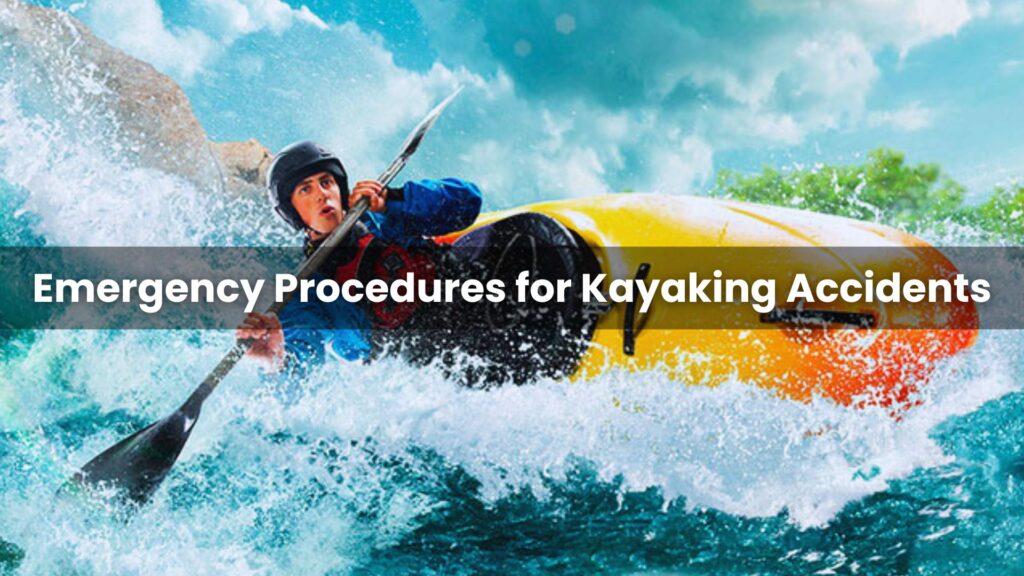
Kayaking is an exhilarating sport that offers both serenity and adventure. However, like any water activity, it comes with inherent risks. Being prepared for emergencies is crucial for every kayaker, from beginners to seasoned paddlers.
Common Emergency Situations
Emergencies on the water can range from capsizing and falling overboard to sudden weather changes and equipment failure. Capsizing is common, especially for beginners, and doesn’t always lead to danger if one is prepared. Other situations include injuries, such as cuts or fractures, or health issues like hypothermia or dehydration.
Emergency Response Strategies
The key to handling any emergency is to stay calm and have a plan. Here are some strategies:
Capsize Recovery: Always wear a life jacket. Practice self-rescue techniques like the ‘wet exit’ and ‘Eskimo roll’. If kayaking in a group, learn assisted rescue methods.
First Aid: Carry a waterproof first aid kit. Learn basic first aid to address cuts, fractures, or hypothermia. Know CPR and how to signal for help.
Communication: Have a whistle and waterproof VHF radio. Inform someone onshore about your trip plan and expected return.
Weather Awareness: Check the weather forecast before heading out. Be aware of signs of changing weather and know when to seek shelter.
Equipment Check: Regularly inspect your kayak and gear. Ensure everything is in good working condition and know how to use all your equipment.
Is Kayaking in the Ocean Dangerous?
Kayaking in the ocean can be dangerous due to the powerful currents, waves, and tides. It is essential to be aware of these factors and to take extra precautions such as wearing a PFD and staying close to shore. Additionally, check the weather forecast and water conditions before heading out and kayak with a partner or guide who can assist in case of an emergency.
General Safety Tips
Stay Within Your Ability: Avoid putting yourself in situations that are beyond your skill level or physical fitness.
Wear a Personal Flotation Device (PFD): Always wear a PFD while kayaking to ensure your safety in case of an emergency.
Check Weather and Water Conditions: Before heading out, check the weather forecast and water conditions to ensure they are safe for kayaking.
Stay Close to Shore: Stay close to shore and avoid areas with heavy boat traffic.
Learn Basic Water Safety Skills: Learn basic water safety skills such as swimming and water rescue techniques.
Kayak with a Partner or Guide: Kayak with a partner or guide who can assist in case of an emergency.
Practice Hydration and Nutrition: Stay properly hydrated and nourished during your trip to maintain energy levels.
What Wind Speed is Dangerous for Kayaking?
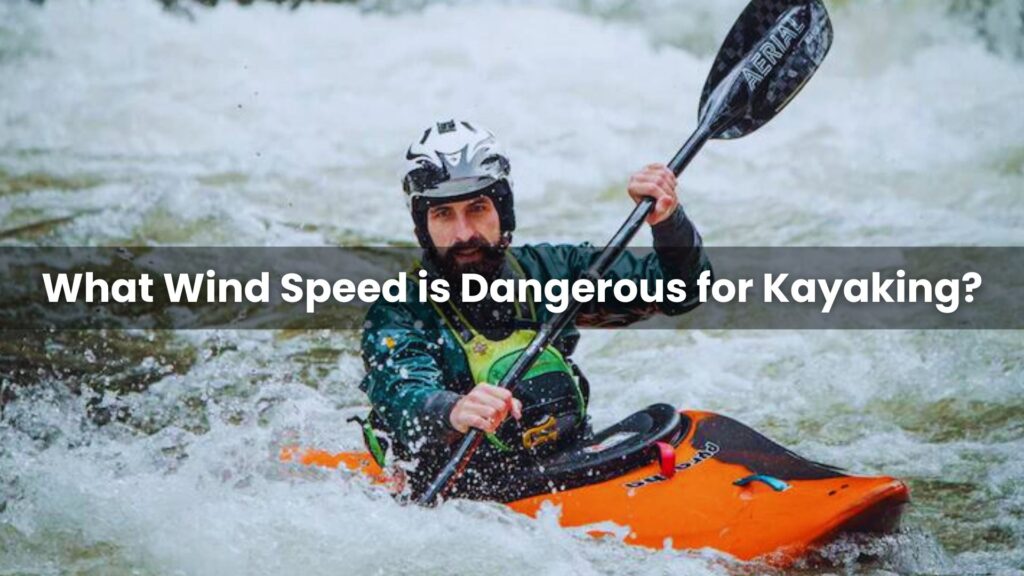
When planning a kayaking trip, it’s essential to consider the wind conditions, as they can significantly impact safety on the water. While a gentle breeze can be refreshing, strong winds can pose serious risks.
Wind speeds up to 12 mph (10 knots) are generally safe for kayaking on recreational waters, such as lakes and slow-moving rivers. These conditions are manageable for most kayakers, allowing for pleasant paddling with minimal chop.
However, as wind speeds increase, so does the potential danger. Winds above 17 knots (19.6 mph) are considered too strong for safe kayaking. At this speed, the risk of capsizing increases, and the effort required to navigate and control the kayak becomes significantly greater.
For open waters, anything over 25 mph (22 knots) is deemed unsafe for kayaking. This level of wind corresponds to a Force 6 on the Beaufort Scale, indicating rough waters with large waves and spray, which can make rescues challenging. Such conditions are recommended only for advanced paddlers with the strength, skills, and stamina to handle them.
Conclusion: Is Kayaking Really Dangerous?
Kayaking, like any outdoor activity, carries its own set of risks, but it is not inherently dangerous. The perception of danger often stems from a lack of preparation or awareness. With proper knowledge, training, and respect for the water, the risks associated with kayaking can be minimized.
The sport becomes hazardous when paddlers overestimate their abilities, neglect weather conditions, or fail to adhere to safety protocols. However, by following the guidelines outlined in this article such as understanding emergency procedures, wearing the right gear, and knowing one’s limits kayakers can ensure a safer experience.
In conclusion, kayaking is a rewarding sport that offers physical and mental benefits. It allows individuals to connect with nature, explore waterways, and enjoy the companionship of fellow paddlers. With the right approach to safety, kayaking can be as safe as any other outdoor pursuit. The key is to stay informed, prepared, and vigilant, turning potential dangers into just another part of the adventure.
Frequently Asked Questions
Is Kayaking a Safe Activity?
Kayaking can be a safe activity if proper precautions are taken. However, it does carry some risks, such as drowning, hypothermia, and injuries from capsizing or collisions with other watercraft. By following safety guidelines and best practices, you can minimize these risks and enjoy a safe and enjoyable experience.
Is Kayaking Dangerous for Non-Swimmers?
Kayaking can be dangerous for non-swimmers if they are not prepared or do not follow proper safety guidelines. Non-swimmers should take extra precautions such as wearing a personal flotation device (PFD) and staying close to shore. It is also important to learn basic water safety skills and to kayak with a partner or guide who can assist in case of an emergency.
Is Kayaking in a Lake Dangerous?
Kayaking in a lake can be dangerous if you are not aware of the lake’s conditions. Factors such as water temperature, wind, and currents can affect your safety. It is essential to check the weather forecast and water conditions before heading out and to wear a PFD. Additionally, stay close to shore and avoid areas with heavy boat traffic.
Is Kayaking in Florida Dangerous?
Kayaking in Florida can be dangerous due to the state’s diverse water environments, including oceans, rivers, and lakes. It is crucial to be aware of the specific conditions and hazards of the water you are kayaking in. For example, the ocean can have strong currents and waves, while rivers may have fast-moving water and rapids. Always wear a PFD and follow local guidelines and regulations.
What Should I do if my Kayak Capsizes?
Remain calm, hold onto your kayak, and perform a self-rescue if possible. If you’re with others, signal for an assisted rescue.
Can Weather Affect the Safety of my Kayaking Trip?
Absolutely. Sudden weather changes can create hazardous conditions. Always check the forecast and be prepared to adjust your plans.
How Does Proper Training Reduce the Risks of Kayaking?
Proper training teaches you how to handle your kayak, navigate, perform rescues, and react appropriately to emergencies, significantly reducing the risks involved in kayaking.

Nigel Foster, born in 1952, is an esteemed sea kayaker, known for being the youngest to kayak around Iceland. His journey in kayaking started at 15 in Brighton, England. With a career beginning as a trainee instructor in Sussex, he later pursued teaching after attending Redland College, Bristol.
Foster’s notable expeditions include navigating the challenging waters of Newfoundland and the Hudson Strait. Despite facing intense conditions, his passion for kayaking never waned. He holds several British Canoe Union qualifications and has significantly contributed to the kayaking community through teaching and committee work.
In 1985, Foster expanded his horizons by assisting an expedition in Iceland and later founded his own kayaking business, sharing his expertise globally.
